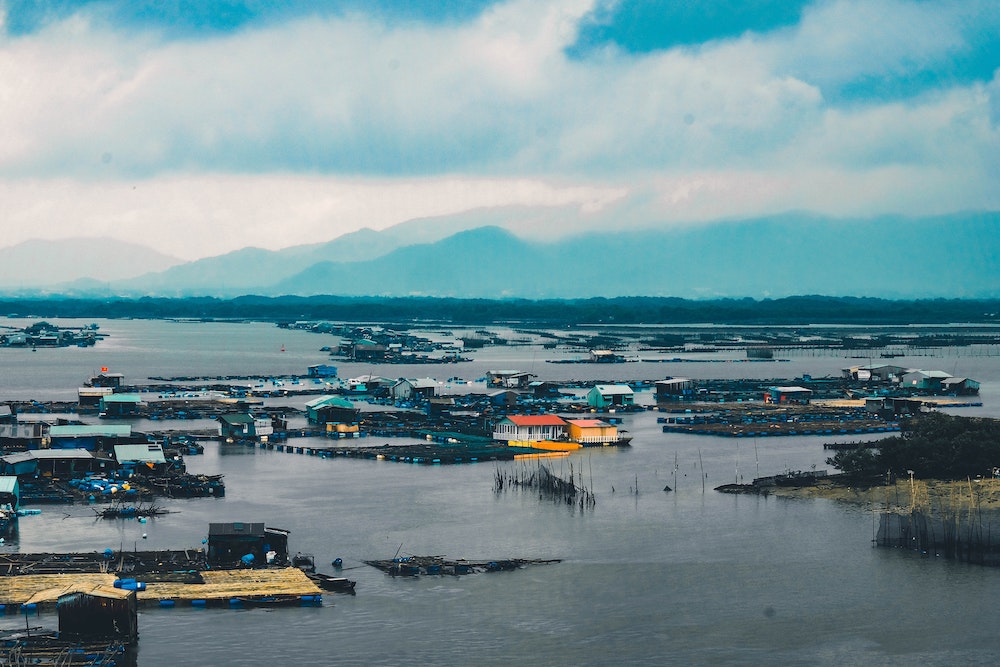
Innovate UK, the UK’s national innovation agency, is funding innovative solutions that integrate climate and environmental factors into financial services through its SBRI – Climate and Environmental Risk Analytics for Resilient Finance competition. CGFI is supporting Innovate UK and successful applicants to deliver the next generation of green finance analytics through expert advice and connecting applicants with potential users to shape the development of these innovative solutions early on.
The below list of projects are funded in the first phase of the competition under the Physical Risk theme.
Machine Learning based Geospatial Sensitivity Analysis Tool (ML-GeoSAT) for Gross Exposure to Climate-Related Risks
ML-GeoSAT allows underwriters to measure physical and transition risks disruptions for the supply chain network of a counterparty. The tool would enable underwriters to capture the unique jurisdictional differences that govern territories effectively as well as the geographical variations assets encounter.
ML-GeoSAT would include a database of geographically tagged assets owned by a counterparty and it would utilise advanced image recognition and natural language processing to compute physical and transition risks across the entire supply chain network.
Ai-based portfolio stress test tool for transition risk assessment (Ai-PortStress)
Ai-PortStress is an innovative AI-enabled tool that empowers underwriters to determine aspects of new/intended projects that they can finance based on their risk appetite.
Specifically, Ai-PortStress seeks to create dynamism in how projects get financed by operationalising physical and transition risks.
Ai-PortStress has 3 primary goals which are:
(1) to codify transition risks by digitalising in real-time government climate-related policies through advanced natural language processing techniques;
(2) to delineate projects into modular blocks with unique assets for unit assessment of transition risks; and
(3) to incorporate regional factors and policies in transition risk assessments for optimal financial decision making.
BELIEVE: Building Enhanced financial resiLience by Integrating Environmental Variability into Economic dispatch
Radical levels of investment in power generation and storage assets is needed to achieve net zero. Asset performance in electricity markets is dependent on the performance of all agents in the marketplace, and in future will be increasingly dependent on weather-driven intermittent generation.
Portfolio owners need to properly assess the strategic risk of weather and climate variability in future markets. Weather dependencies of agent actions and market outcomes are poorly considered in current modelling.
BELIEVE will combine novel methods for modelling weather driven generation with economic dispatch, to optimise asset value in long term strategic portfolio planning for resilient finance.
OxEO water stress index
We are building an index of predicted water stress for individual assets. Data is derived from computational hydrology, using earth observation and machine learning.
Our product is for customers with economic exposure to any water-intensive asset operating in any water-stressed location. This event is an exciting opportunity for us to socialise our approach and test use cases within the financial community.
certain.1 - climate and environment risk
133 years ago the idea of a credit card was first ‘coined’. 79 years later the first UK credit card was issued. Finance and investment organisations are unequipped; not only in mitigating/adapting to climate and environmental risks, but how to gauge them and we don’t have 79 years.
certain.1 creates ratings for the whole environment; analysing over 35 parameters across light, thermal, acoustic, air-quality and utilisation; providing overall environment ratings.
Most importantly certain.1 analyses the interactions between parameters providing deep understanding of chronic physical and transitional risks. With the necessary tools to mitigate and adapt to climate and environmental change.
Predicting Physical Risk for Crops - on a Global Scale
We intend to predict the worlds key crop production, country by country, crop by crop.
This data is critical to governments, banks, traders, insurance companies as well as the everyday consumers.
By using satellite data, weather data, climate data, and historical yield data we can built models to predict yields months in advance.
We are starting with sugar and wheat in the UK and will then expand to other countries. We already have multiple global clients signed up and are looking to expand rapidly.
LOSS-SAMPLER: A tool for identifying unseen volatility in present and future Climate and Environmental Risk (CER) portfolios
We are developing a foundational SaaS tool to swiftly and defensibly connect climate & environmental scientific information with economic-loss focused catastrophe models.
The tool will have wide-ranging private market applications, such as: catastrophe model evaluation & implementation; managing peak exposures in present-day catastrophe risk portfolios; and quantifying & responding to catastrophe risk in a changing climate, from public, investor and regulatory perspectives.
While the tool is developed from insurance-focused catastrophe risk data, it is flexible enough to be directed at many different private markets; we will develop products tailored to end-users across as many of these as possible.
Surface water flood forecast- and nowcast-based loss estimation for resilient finance
Loss estimation tools combining flood nowcasting and forecasting for perils that are rarely accounted for (e.g. surface water flooding) are urgently needed to help insurers and reinsurers make reserving decisions with confidence.
This project will therefore develop a loss estimation algorithm parameterised using Previsico’s world-leading forecast-/nowcast-derived flood extent and depth data and asset exposure and vulnerability data to produce financial risk forecasts and nowcasts.
These will in turn be delivered to customers via Previsico’s flood dashboard and alongside asset alerts and flood intelligence, will support emergency response coordination, helping deliver direct and indirect savings to assets and critical infrastructure.

